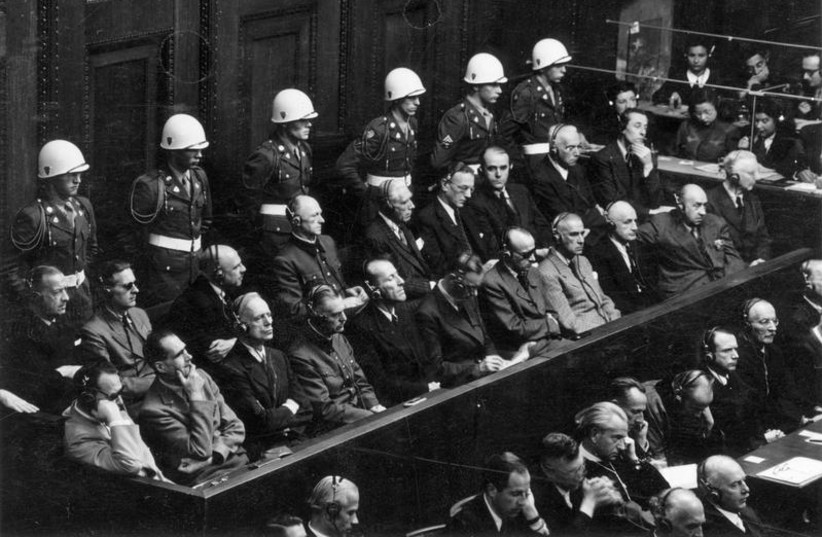Ben Macintyre is well known as the bestselling author of several books related to espionage during and after World War II. His book Operation Mincemeat and the film based on it told the story of the greatest deception of the war – convincing Hitler that the Allies planned to make their Mediterranean crossing onto the European continent in Greece and not Italy.
In Prisoners of the Castle, he turns to the remarkable story of Colditz Castle, made famous by its international collection of prisoners of war.
Macintyre’s book is not the first one on the topic. Indeed, many of those imprisoned by the Germans after their capture have written their own accounts both about their incarceration and their desperate attempts to escape from a medieval prison castle that the Nazis considered to be escape-proof.
And yet, escape attempts were frequent. The prisoners in the castle were considered by the Nazis to be troublemakers and were usually transferred to Colditz as a punishment for trying to escape from other prisons. Perhaps the best-known account of Colditz is Henry Chancellor’s Colditz: The Definitive History (2001), which was based on a television series, the research for which included interviews with many former inmates.
Macintyre has used these interviews to good effect, producing a historical account that reads like a thriller. One escape attempt after another was planned and often ended in failure; though sometimes the escapee managed to reach Switzerland safely or even make it to London.

Allied prisoners included mainly French, Polish and British prisoners. Occasionally, their attempts to tunnel to freedom, working in national groups, ended with breaking into the tunnels of other would-be escapees. Macintyre notes the significant presence of Jewish prisoners, primarily officers in the French and Polish armies, but also including some British Jews.
The Jewish prisoners had a somewhat uneasy presence in Colditz. The Nazis’ brutal and murderous hostility toward Jews was well known; and though the army officers in Colditz were treated, for the most part, according to the Geneva Convention, fear remained. For the French Jews, the presence of Vichy supporters among their army colleagues caused more problems than those experienced by Jewish Polish or British prisoners.
One of the British prisoners, Airey Neave, later a prominent Conservative politician and victim of the Irish Republican Army’s bombing campaign of the 1980s, took a leading role in providing the French Jews the support they needed.
Macintyre details how many of the escapes were planned and carried out. He shows how prisoners could not get very far without knowledge of German, civilian clothes, and some money and documents. Thus a secret industry grew inside the castle, hidden from the guards but sometimes betrayed by informers.
One of the best-known British prisoners was group captain (later Sir) Douglas Bader. Despite being a double amputee following a plane crash, he became a flying ace during World War II. He was captured after bailing out over France in 1941. And after several escape attempts, he was sent to Colditz, where he remained until the prison was liberated by the First United States Army.
Personal knowledge of two Jewish prisoners at Colditz
I WAS privileged to know two of the Jewish prisoners at Colditz, both patients in my medical practice. One was Anthony (Tony) Karpf, a cadet officer in the Polish Army who experienced antisemitism from the prison guards, being sent frequently to solitary confinement “because you are a Jew.”
Karpf had been transferred to Colditz after his escape attempts in a previous camp had been betrayed by the antisemitic Polish Volksdeutsche – Poles of German origin. Karpf moved to Scotland after the war, settling in Glasgow, where he married and set up a very successful china business with his wife.
The other was Julius Green, who was born in Killarney, Ireland, but grew up in the historic Scottish city of Dunfermline, which had a small Jewish community in the interwar years. Green was a dentist who became a coded letter writer in Colditz, when he was not removing rotten teeth.
The coded letters depended on the recognition of patterns of words embedded in what looked like chatty family correspondence. This was never recognized by the German censors, who were unable to discover the importance of the coded messages. Writing these letters was complicated and time-consuming. It also meant that when the families received the coded letters, they had to send them immediately to MI9 for deciphering and further action.
The elevated height of the castle provided the letter writers with a good vantage point, and the eavesdropping and other observations contained in the material that was sent to Britain were invaluable. Green published his story in his book, From Colditz in Code (1971).
Green tried to hide his Jewishness in Colditz, fearing reprisals if his espionage activity was betrayed, but other Jewish prisoners emerged unscathed. One was the popular Jewish cockney Solly Goldman, who ran the German kitchen and was universally liked by prisoners and guards.
The story of the Colditz prisoners is one of resilience and defiance. In the hands of Macintyre, a new generation can learn of their heroism.
PRISONERS OF THE CASTLE
By Ben Macintyre
Viking
384 pages; £25
